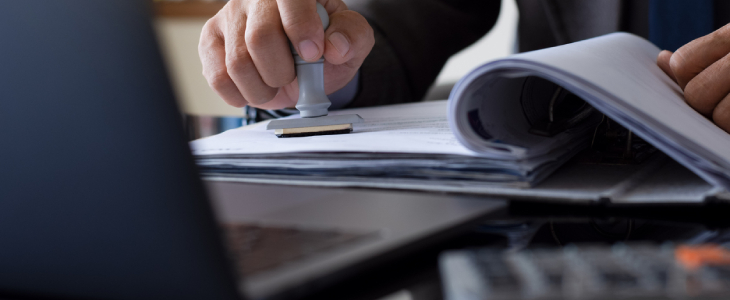The trademark examination process is a central step in securing the legal protection of a brand’s identity. This procedure involves a detailed review by trademark examiners to ensure a brand’s mark is distinctive and does not conflict with existing trademarks. It serves as a gateway to establishing a strong, legally recognized brand presence, something that is essential for businesses in today’s competitive market. Successfully navigating this process can significantly impact a business’s ability to protect its unique brand and intellectual property.
What Is a Trademark Examination?
A trademark examination is conducted by a trademark office to assess the registrability of a trademark application. During this examination, the trademark is scrutinized to ensure it meets the legal requirements for protection. The primary focus is to determine whether the mark is distinctive, not misleading, and does not conflict with any existing registered trademarks. This examination is vital in preventing legal disputes and ensuring that each trademark uniquely identifies its owner’s goods or services. The outcome of this examination can be pivotal for businesses. A successful examination leads to the registration of the trademark, granting the owner exclusive rights to use it in commerce.
Preparing for a Trademark Examination
Preparing for a trademark examination begins with a strategic selection of the trademark itself. The chosen mark should be distinctive and should avoid generic or descriptive terms related to the goods or services it represents. It’s important to conduct a comprehensive search for existing trademarks so that the proposed mark doesn’t infringe on others’ rights. This search not only includes registered trademarks but also unregistered ones in use, as they may have common law rights. Businesses should consider consulting with a trademark attorney to navigate this process and develop a strong application.
The next step is crafting a clear and precise trademark application. The application should accurately describe the goods or services the trademark will cover, and it may need to include an example showing the mark in use. Ensuring accuracy and completeness in the application can prevent delays and objections during the examination process. Attention to these preparatory details lays the groundwork for a smoother trademark examination, increasing the chances of a successful registration.
The Examination Process Explained
The trademark examination process commences once the application is filed. An assigned trademark examiner, skilled in intellectual property law, reviews the application for compliance with legal standards. This thorough review includes checking the uniqueness of the trademark, making sure it does not closely resemble any existing trademarks that might confuse consumers. The examiner also verifies that the application fulfills all formal requirements, such as proper classification of goods and services and the clarity of the trademark’s representation. A successful examination concludes with the approval of the trademark, leading to its publication for opposition and eventual registration.
Responding to Office Actions
If the examiner identifies any problems, they issue an Office Action, which is an official communication from the trademark office detailing the objections raised by the examiner regarding the trademark application. These concerns can range from the need for additional information or clarification to more significant issues like the likelihood of confusion with existing trademarks. Timely and precise responses are essential to address these concerns effectively and keep the application moving forward.
Crafting a response to an Office Action may involve providing additional evidence to support the distinctiveness of the trademark, revising the description of goods and services, or arguing legal points to overcome the examiner’s objections. Professional legal advice can be invaluable in this stage, helping to navigate the complexities of trademark law and increasing the chances of a successful outcome for the application.
After the Examination: Next Steps
Once a trademark examination concludes with approval, the next phase begins, marked by the publication of the trademark in an official gazette. This publication period allows any third party to oppose the registration if they believe it infringes on their rights. If no opposition arises, or if any challenges are successfully resolved, the trademark proceeds to registration. This grants the trademark owner exclusive rights to use the mark in commerce. In case of examination denial, applicants can either appeal the decision or file a new application, potentially with modifications. Regular monitoring and renewal of the trademark are essential to maintain these rights and protect the brand’s identity.
The Role of Trademark Monitoring
Trademark monitoring plays a vital role in the context of trademark examinations. It involves continuously scanning trademark databases and market activities for any new filings that might conflict with existing trademarks, including ones currently under examination. This proactive approach aids in identifying potential infringement or similarity issues early on, which can be critical during the examination process. By keeping a vigilant eye on the trademark landscape, businesses can promptly address any conflicts or objections that arise, ensuring their trademark application has the best chance of successful registration. Regular monitoring is key to safeguarding trademark rights and maintaining the integrity of a brand throughout the examination phase and beyond.
The Examination Process for International Trademark Applications
The examination process for international trademark applications requires careful navigation through varied legal landscapes. When a trademark is filed internationally, typically through the Madrid System, it must undergo examination in each country where protection is sought. Each national office evaluates the application against its specific legal criteria, including checks for distinctiveness and potential conflicts with pre-existing trademarks. This can result in diverse outcomes and objections based on different national standards. Successfully managing this process demands an in-depth understanding of each country’s trademark laws, as well as a strategic approach to address any issues that arise, ensuring a smooth path to registration and protection in multiple markets.
Common Mistakes in the Trademark Examination Process
Securing a trademark requires careful attention to detail, and common mistakes can lead to delays or rejection. Many applicants overlook key requirements, resulting in unnecessary legal hurdles. By understanding these pitfalls, businesses can improve their chances of a smooth registration process.
- Choosing a Generic Trademark – Lacks distinctiveness and is hard to protect.
- Skipping a Trademark Search – Risks conflicts with existing trademarks.
- Inaccurate Goods/Services Description – Leads to delays or rejection.
- Ignoring Classification Rules – Misclassification can complicate approval.
- Missing Deadlines or Requirements – Failing to meet legal deadlines can result in abandonment.
Avoiding these errors can significantly improve your chances of trademark approval. A strategic approach, including professional guidance, ensures a stronger application and long-term protection of your brand.
Contact Our New Jersey Trademark Examination Attorney
Successfully managing the trademark examination process is vital for securing your brand’s legal protection. By being aware of potential challenges and adopting a strategic approach, you can improve the likelihood of a positive outcome. If you need assistance or have questions, Gearhart Law can provide professional support and advice to help you protect your brand effectively. We’re here to guide you through every step of the trademark process.
Gearhart Law is based in Summit, NJ, and also serves clients in Millburn, Westfield, New Brunswick, Springfield, Millburn-Short Hills, New Providence–Berkeley Heights, Chatham, Madison, Cranford, Maplewood, and all of New Jersey. We also assist clients internationally with their IP needs.

